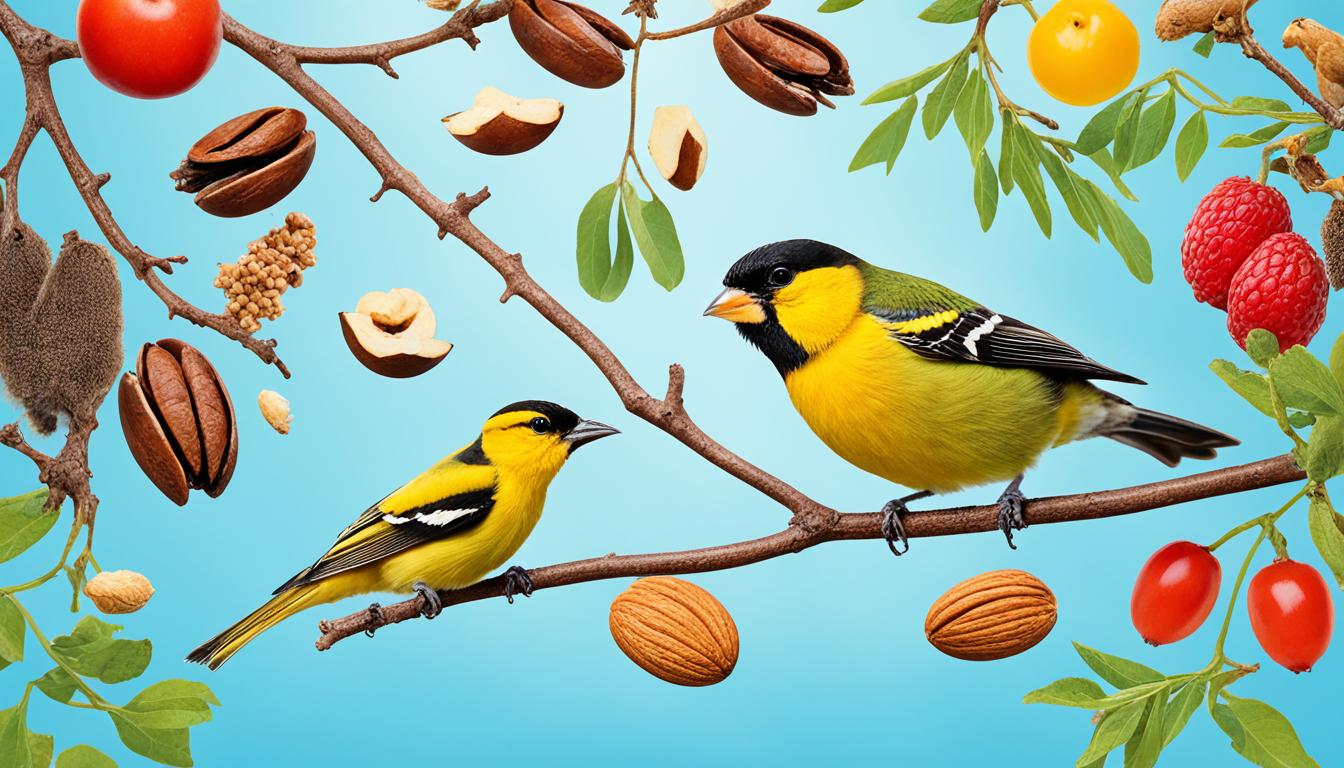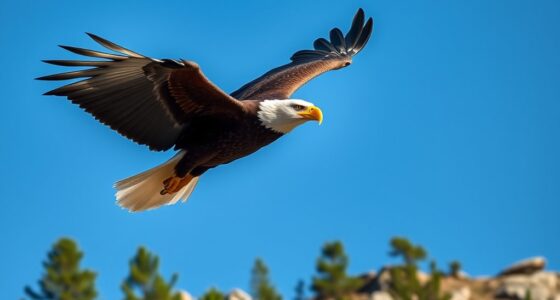Many species of birds are classified as omnivores, meaning they eat both plants and animals. It’s a fact! These winged animals can eat a range of foods to stay healthy. From crows to woodpeckers, ducks to pheasants, omnivorous birds have a varied diet.
Key Takeaways:
- Omnivorous birds have a diet that includes both plant-based and animal-based foods.
- Examples of omnivorous bird species include crows, woodpeckers, ducks, and pheasants.
- Omnivorous birds have the flexibility to consume a wide range of foods to meet their nutritional requirements.
- Their diet can include seeds, fruits, insects, mammals, rodents, fish, and more.
- The availability of food sources in their habitat can influence their dietary preferences.
What is an Omnivore?
An omnivore is an animal, including birds, that has a diet consisting of both plant-based and animal-based food. This dietary adaptation allows omnivorous animals to thrive in a wide range of habitats and ecological niches. Omnivorous birds, in particular, have developed a unique ability to consume various types of food, enabling them to obtain the necessary nutrients for their survival.
Omnivorous birds exhibit a diverse range of feeding behaviors and have adapted to consume a wide variety of foods. Their diet includes:
| Plant-based Foods | Animal-based Foods |
|---|---|
| Seeds | Insects |
| Grasses | Snakes |
| Fruit | Mammals |
| Nuts | Rodents |
| Plants | Fish |
Omnivorous birds do not necessarily need to consume every type of plant or animal food available, but their diet must include significant amounts of both categories to be classified as omnivorous. This dietary flexibility allows them to adapt to changing environmental conditions and exploit a wide range of food resources.
Diet of Omnivorous Birds
The diet of omnivorous birds is highly adaptable and diverse, allowing them to consume a wide range of plant-based and animal-based foods to meet their nutritional needs. These birds have the flexibility to adjust their diet based on the availability of food sources in their habitat.
Omnivorous birds consume various plant-based foods as part of their diet. These include:
- Seeds
- Grasses
- Fruit
- Nuts
- Grain
- Nectar
- Pollen
- Buds
Alongside plant-based foods, omnivorous birds also include animal-based foods in their diet. These can range from:
- Insects
- Snakes
- Carrion
- Mammals
- Rodents
- Lizards
- Fish
- Eggs
- Crustaceans
Omnivorous birds are opportunistic feeders, taking advantage of the vast array of food options available to them. The ability to consume both plant-based and animal-based foods provides them with the necessary nutrients to maintain their health and well-being.
Examples of Plant-Based and Animal-Based Foods Consumed by Omnivorous Birds
| Plant-Based Foods | Animal-Based Foods |
|---|---|
| Seeds | Insects |
| Grasses | Snakes |
| Fruit | Carrion |
| Nuts | Mammals |
| Grain | Rodents |
| Nectar | Lizards |
| Pollen | Fish |
| Buds | Eggs |
| Crustaceans |

“The ability of omnivorous birds to consume a diverse range of plant-based and animal-based foods showcases their adaptability to different environments and food availability.”
The diverse diet of omnivorous birds enables them to thrive in various habitats, utilizing the resources around them. Whether it’s foraging for insects or feasting on berries and seeds, these birds play a critical role in the ecosystem as they contribute to seed dispersal and help control insect populations.
Omnivorous Bird Species
Omnivorous birds are a diverse group of species that have adapted to consume both plant-based and animal-based food sources. Let’s explore some examples of omnivorous birds:
Crows
Crows are highly intelligent birds known for their adaptability. They have a varied diet that includes fruits, seeds, insects, small mammals, and carrion.
Ducks
Ducks are water-loving birds that feed on a wide range of food sources. Their diet includes aquatic plants, seeds, insects, small fish, and crustaceans.
Woodpeckers
Woodpeckers use their strong beaks to drill into trees in search of insects such as beetles, ants, and spiders. They also consume fruits, nuts, and seeds.
Thrushes
Thrushes are known for their melodious songs and their diet consists of insects, worms, fruits, berries, and seeds. Some species also consume small amphibians and reptiles.
Robins
Robins are common backyard birds that feed on a variety of foods. Their diet includes earthworms, insects, fruits, and berries.
Pheasants
Pheasants are ground-dwelling birds that have a diverse diet. They consume a wide range of plant matter, including seeds, leaves, berries, and flowers. They also feed on insects, worms, and small vertebrates.
Orioles
Orioles have a sweet tooth and feed on nectar, fruits, and insects. They also incorporate spider silk into their nests.
Gulls
Gulls are opportunistic feeders and can be found near bodies of water. They consume fish, insects, crustaceans, small mammals, and even garbage.
Starlings
Starlings are highly adaptable birds with a diverse diet. They eat insects, fruits, seeds, grains, and even small vertebrates.
Blackbirds
Blackbirds consume a variety of foods, including insects, seeds, fruits, berries, and grains. They are sociable birds and often feed in large flocks.
These are just a few examples of the many omnivorous bird species found around the world. Each species has its own unique feeding strategies and preferences, but they all share the ability to consume both plant-based and animal-based foods to meet their nutritional needs.

| Species | Plant-Based Foods | Animal-Based Foods |
|---|---|---|
| Crows | Fruits, seeds | Insects, small mammals, carrion |
| Ducks | Aquatic plants, seeds | Insects, small fish, crustaceans |
| Woodpeckers | Fruits, nuts, seeds | Insects |
| Thrushes | Insects, worms, fruits, berries, seeds | Small amphibians, reptiles |
| Robins | Earthworms, insects, fruits, berries | N/A |
| Pheasants | Seeds, leaves, berries, flowers | Insects, worms, small vertebrates |
| Orioles | Nectar, fruits | Insects, spider silk |
| Gulls | N/A | Fish, insects, crustaceans, small mammals, garbage |
| Starlings | Insects, fruits, seeds, grains | Small vertebrates |
| Blackbirds | Insects, seeds, fruits, berries, grains | N/A |
Seasonal Variations in Diet
The diet of omnivorous birds can vary throughout the year based on the availability of food sources. These variations in diet are influenced by seasonal changes that affect the abundance and accessibility of different types of food.
During the spring and summer months, when populations of insects are booming, omnivorous birds rely heavily on these small creatures as their primary food source. Insects provide a rich source of protein and nutrients that are essential for the growth and development of birds. This period is marked by increased foraging activity as birds search for caterpillars, beetles, grasshoppers, and other insects.
As fall approaches and temperatures cool down, fruits and grains become more readily available. Omnivorous birds take advantage of these seasonal offerings and include them more regularly in their diet. They feast on ripe berries, seeds, and grains, which provide them with additional energy to prepare for the upcoming winter months.
Winter brings its own challenges for omnivorous birds. Food sources can become scarce, especially during severe weather conditions. As a result, omnivorous birds become less selective in their food choices and will eat a wider variety of foods to ensure their survival. During this time, they may rely on scavenging for carrion, consuming dried fruits and nuts, or even raiding bird feeders for a quick meal.
Diet variations also occur during the breeding and moulting seasons. These periods place specific nutritional demands on birds, with a greater need for higher protein foods, such as insects and small vertebrates, to support egg production and feather growth, respectively.
The ability of omnivorous birds to adapt their diet to the changing seasons is a testament to their flexibility and resourcefulness. By taking advantage of the food sources available to them throughout the year, they can thrive in a variety of environments and ensure their survival.
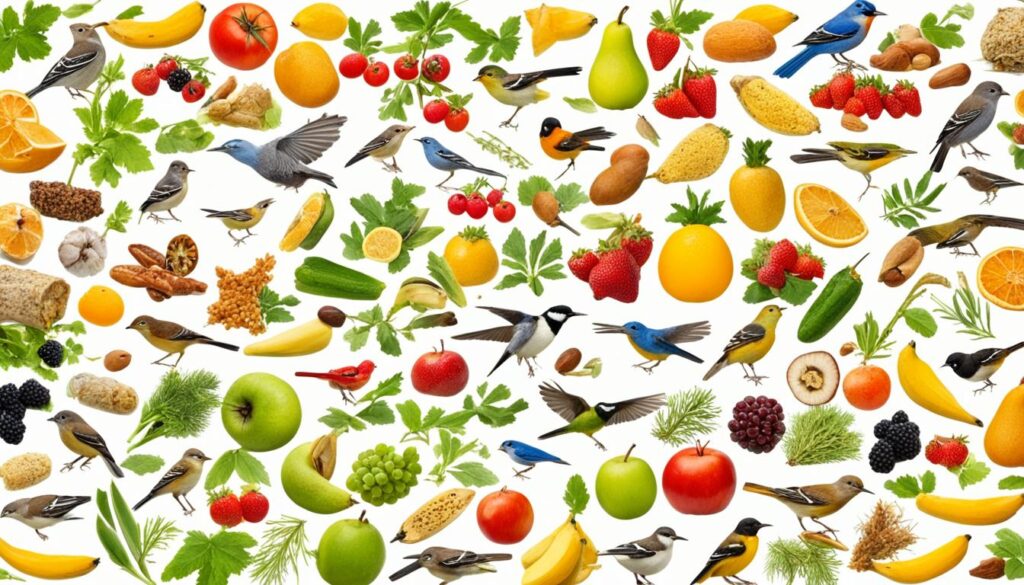
| Season | Primary Food Sources |
|---|---|
| Spring and Summer | Insects: caterpillars, beetles, grasshoppers |
| Fall | Fruits and grains: berries, seeds, grains |
| Winter | Scavenged carrion, dried fruits, nuts |
| Breeding and Moulting Seasons | High protein foods: insects, small vertebrates |
Feeding Omnivorous Birds
To attract a diverse range of omnivorous birds to your backyard, it is important to provide a mixture of both plant-based and animal-based food sources. By offering a variety of foods, you can create an enticing environment that appeals to a wide array of bird species.
One option for attracting omnivorous birds is to provide mealworms, which are a popular food source for many bird species. Mealworms are high in protein and nutrients, making them an excellent choice for birds that rely on animal-based foods in their diet. You can place mealworms in a shallow dish or a specialized mealworm feeder to make them easily accessible to the birds.
Seeds are another essential food source for omnivorous birds. A seed feeder filled with a variety of seeds, such as sunflower seeds, millet, and safflower seeds, can attract species like crows, woodpeckers, and starlings. Offering a diverse seed mix ensures that different birds will find something they enjoy.
Suet is a valuable food source for many omnivorous birds, providing them with a concentrated source of energy. It is especially beneficial during colder months when birds need extra calories to stay warm. You can use suet feeders or place suet cakes in wire cages to prevent them from melting in warmer weather.
To cater to omnivorous birds that consume plant-based foods, it is important to offer fruits and nectar. Placing fresh fruits, such as oranges, apples, and berries, on a fruit feeder or even on a tray can attract birds like thrushes and orioles. Similarly, hanging hummingbird feeders filled with nectar will entice hummingbirds and other nectar-loving species.
Using different types of feeders can also help attract a variety of bird species. Tube feeders, hopper feeders, platform feeders, and suet feeders each have their own appeal and can attract different types of birds. By providing a range of feeder styles, you can increase the diversity of birds in your backyard habitat.
Regularly cleaning your feeders is crucial for maintaining a healthy feeding environment. Feeders can quickly become dirty and contaminated with bacteria, which can harm birds. Clean feeders at least once a month with a mild detergent and rinse thoroughly to remove any leftover residue. This practice will help prevent the spread of diseases among the birds visiting your feeders.
Additionally, using baffles or other deterrents can help keep unwanted visitors away from your feeders. Squirrels, raccoons, and larger birds may attempt to consume or monopolize the food meant for smaller omnivorous birds. By using baffles or placing feeders in strategic locations, you can discourage these unwanted visitors and create a more inviting space for the birds.
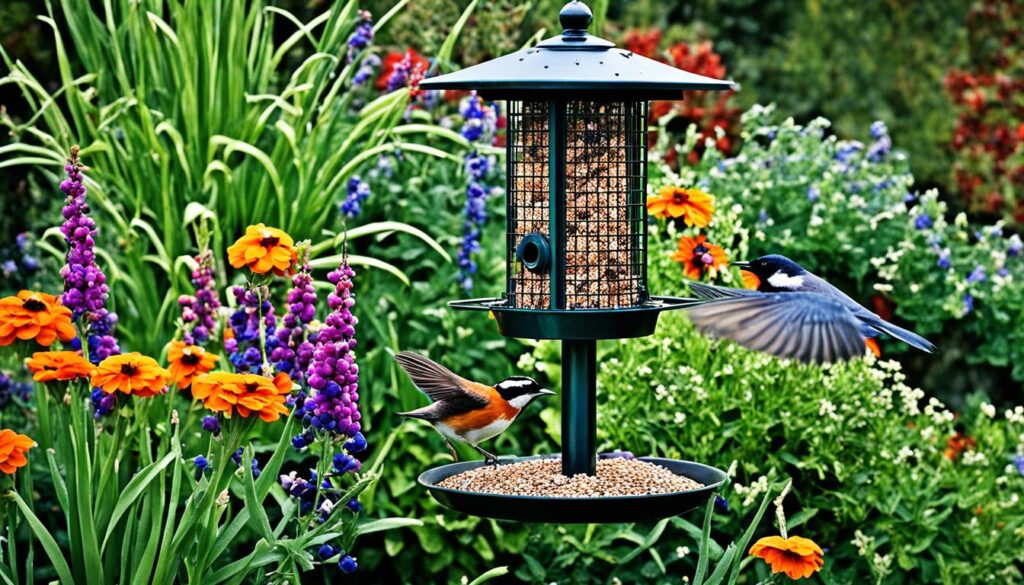
Attracting a variety of omnivorous birds to your backyard feeders can provide endless enjoyment and opportunities for birdwatching. By providing a balanced and appealing mix of plant-based and animal-based foods, maintaining clean feeders, and using deterrents to discourage unwanted guests, you can create an ideal feeding environment for these fascinating avian visitors.
Human Impact on Bird Diets
Feeding birds can have both positive and negative impacts. Let’s explore the pros and cons of feeding birds and the potential impact it can have on their diets.
Pros of Feeding Birds
- Enhanced birdwatching experiences: Feeding birds can attract a variety of species, providing bird enthusiasts with the opportunity to observe and appreciate their beauty up close.
- Aiding bird survival during harsh seasons: Birds often struggle to find food during extreme weather conditions or when natural food sources are scarce. Feeding them can help supplement their diet and increase their chances of survival.
- Educational and awareness raising: Feeding birds can be a great educational tool, especially for children, as it offers an opportunity to learn about bird behaviors, species identification, and the importance of conservation.
Cons of Feeding Birds
- Potential for malnutrition: Feeding birds inappropriate or unsuitable food can lead to malnutrition, as it may lack essential nutrients or be difficult for birds to digest.
- Disease spread at feeding stations: When birds congregate at feeding stations, the risk of disease transmission increases. Improper hygiene or contaminated food can contribute to the spread of diseases among bird populations.
While feeding birds can be a rewarding and beneficial activity, it is crucial to research and provide suitable foods for the species of birds in your area. Understanding their natural diets and nutritional requirements is essential for promoting their health and well-being.
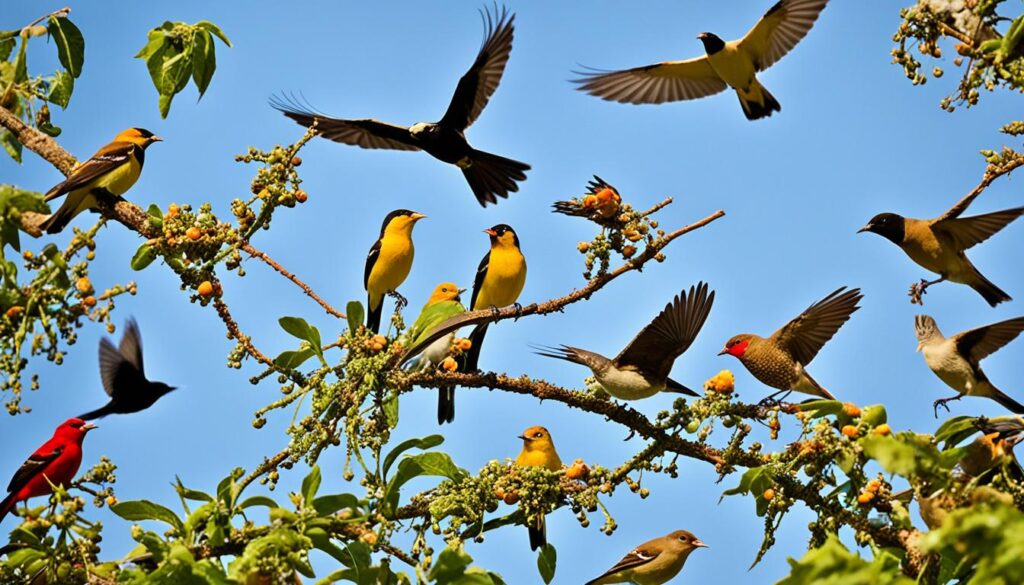
“Feeding birds can be a fun and educational activity, but it’s important to provide the right food and maintain proper hygiene to ensure the well-being of our feathered friends.” – Jane Smith, Bird Enthusiast
Conserving Bird Diets
Understanding the dietary habits of birds is vital for effective bird conservation. By gaining insight into what a particular bird species eats, conservationists can develop targeted strategies to protect their habitats and ensure the availability of essential food sources.
To conserve bird diets, several key measures can be taken:
- Protect natural habitats: Preserving and restoring natural habitats is crucial for providing birds with the necessary resources and ensuring a diverse range of food sources. This includes safeguarding nesting sites, wetlands, forests, grasslands, and coastal areas.
- Reduce pesticide and insecticide use: Chemicals used in agriculture and landscaping can have detrimental effects on bird populations by contaminating their food sources or causing direct harm. By promoting organic and sustainable farming practices, as well as minimizing the use of harmful chemicals, we can protect birds’ access to safe and plentiful food.
- Promote biodiversity: Encouraging the presence of a variety of plant species in ecosystems helps sustain diverse bird populations. Different birds have specific dietary preferences, so a diverse range of plant life ensures a consistent and ample food supply. Planting native vegetation and creating habitats that support a rich insect population are essential steps in promoting biodiversity.
Conservation efforts focused on understanding bird diets and protecting their habitats not only benefit bird populations but also contribute to the overall health and balance of ecosystems. By prioritizing bird conservation, we can help preserve the ecological functions that birds provide, such as pollination, seed dispersal, and insect control.
“Protecting natural habitats, reducing pesticide use, and promoting biodiversity are essential for conserving bird diets and ensuring the long-term survival of bird populations.”
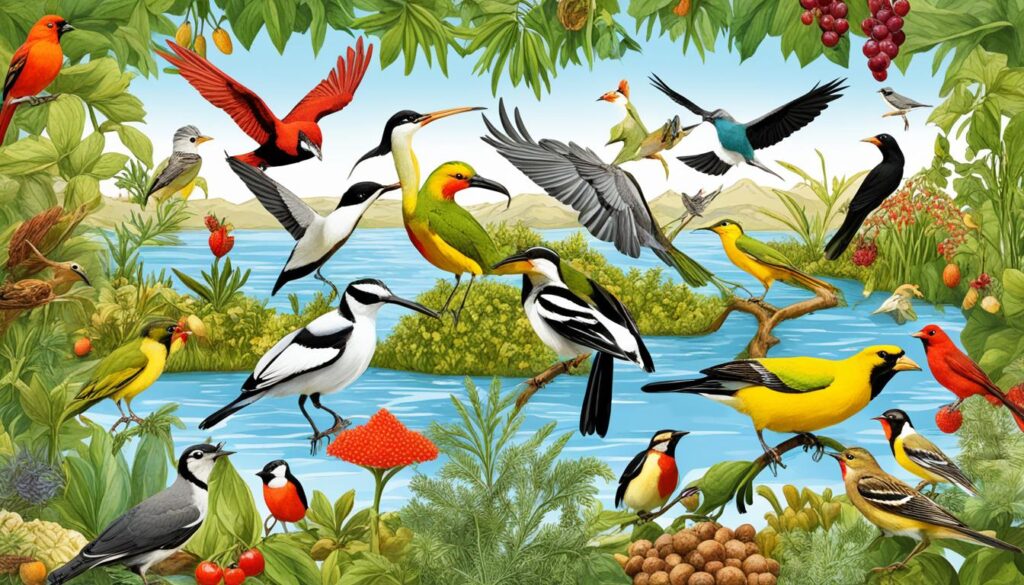
Geographic Influence on Bird Diets
Geography plays a significant role in shaping the diets of birds. Different environments across the globe offer a wide range of food resources, which, in turn, influence the dietary preferences of avian species. Take, for example, the lush tropical rainforests teeming with biodiversity. In such habitats, birds have access to a variety of food sources, leading to diverse diets that include fruits, seeds, nectar, and insects.
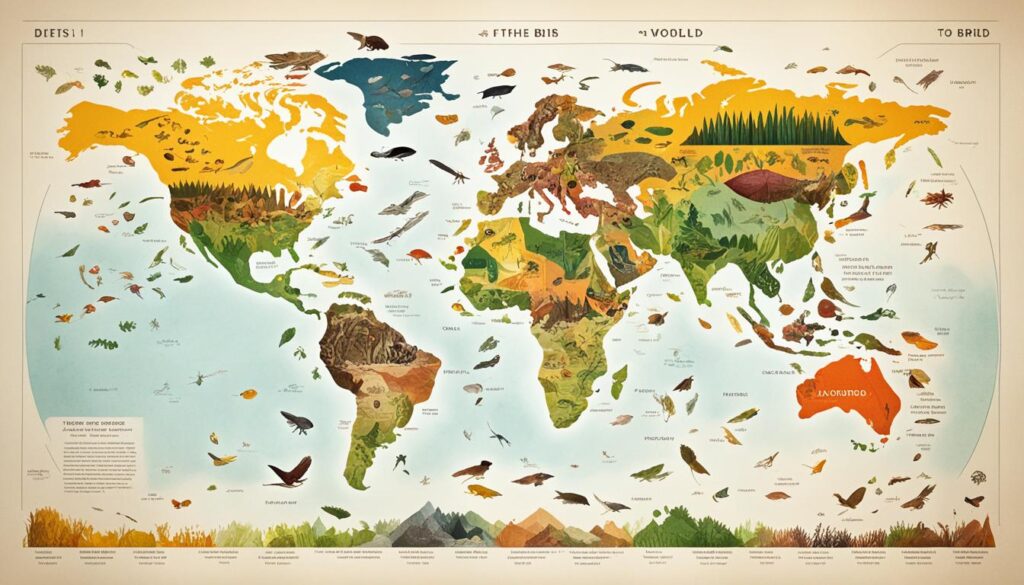
Regional Variations in Bird Diets
| Region | Dominant Food Sources | Example Bird Species |
|---|---|---|
| Tropical Rainforests | Fruits, seeds, nectar, insects | Toucans, parrots, hummingbirds |
| Grasslands | Grains, seeds, insects, small mammals | Sparrows, finches, ground-dwelling birds |
| Coastal Areas | Fish, crustaceans, mollusks, insects | Gulls, terns, pelicans, herons |
| Arctic | Insects, berries, scavenged carrion | Snow buntings, ptarmigans, Arctic terns |
In contrast, geographical regions with limited resources, such as the Arctic, present birds with a more restricted selection of food. In such harsh environments, bird diets consist primarily of insects, berries, and scavenged carrion. The availability of food is directly influenced by geographical factors such as climate, vegetation types, and the presence of specific prey species.
By adapting to the available food resources within their respective regions, birds have evolved specialized beaks, digestive systems, and feeding behaviors. These adaptations allow them to efficiently extract nutrients from their preferred food sources, ensuring their survival and reproductive success.
Geographical factors, ranging from the lush rainforests to the frigid Arctic, mold avian diets by offering diverse or limited food resources. Birds, in turn, have adapted to these environments, developing specialized feeding adaptations to extract nutrient-rich meals according to the available resources.
Next, we’ll explore the ways in which feeding habits of omnivorous birds can be supported through bird feeders and appropriate food offerings.
Conclusion
The diversity of bird diets is truly remarkable, as these feathered creatures exhibit a wide range of dietary preferences. While some bird species are exclusively herbivorous or carnivorous, a significant number fall into the category of omnivores. Interestingly, within the Anseriformes order, which includes ducks, geese, and swans, there have been numerous independent transitions towards a predominantly herbivorous diet.
Contrary to popular belief, the size of a bird’s body does not necessarily determine its dietary habits. Instead, factors such as phylogeny and the availability of food sources play a more significant role in shaping bird diets. Understanding the dietary preferences of different bird species is essential for their conservation and overall well-being.
Respecting and preserving natural habitats, providing suitable food sources, and appreciating the various dietary needs of birds are crucial aspects of bird conservation and enjoyment. By taking these considerations into account, we can help ensure the continued diversity and vitality of bird populations in the United States and beyond.
